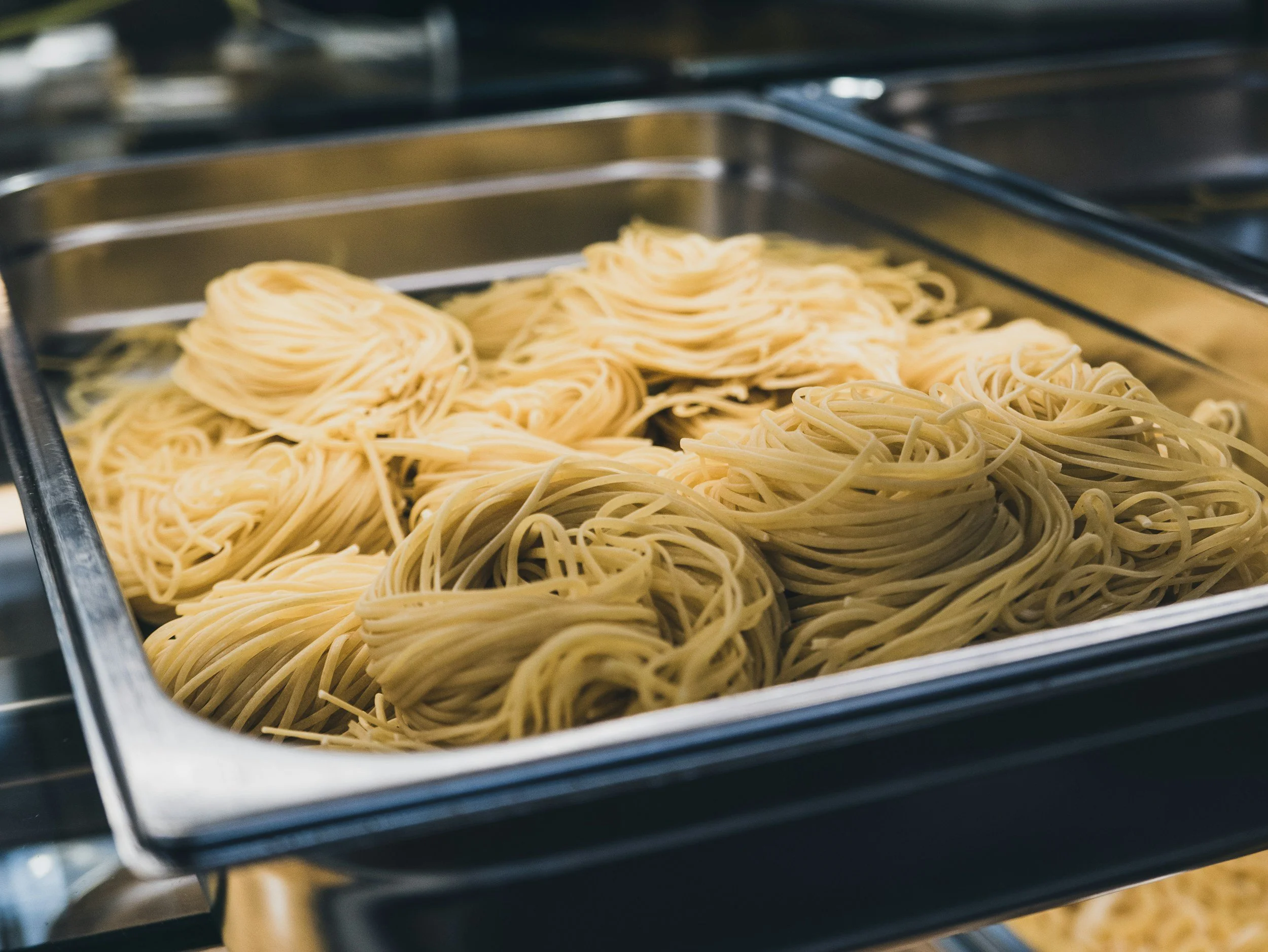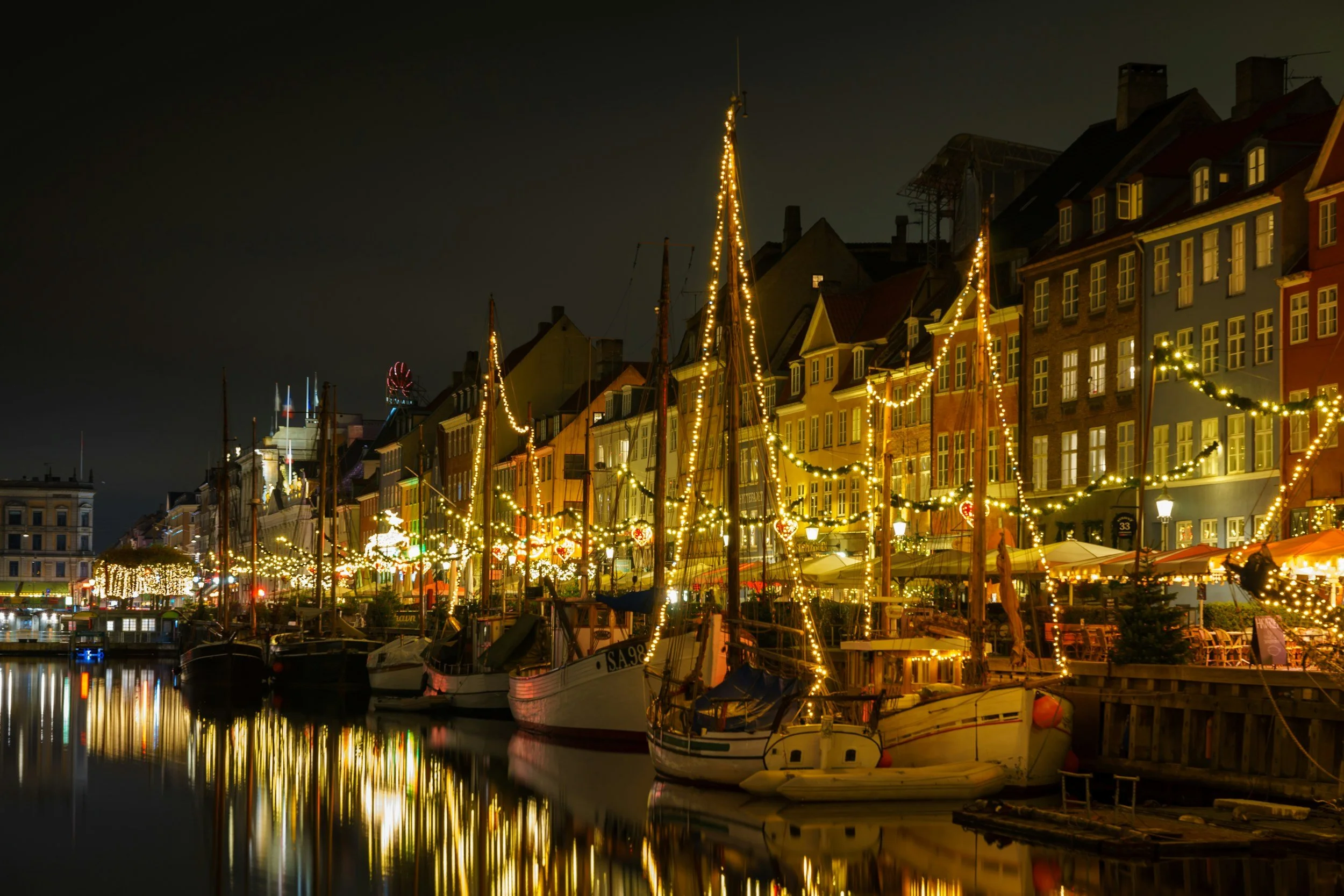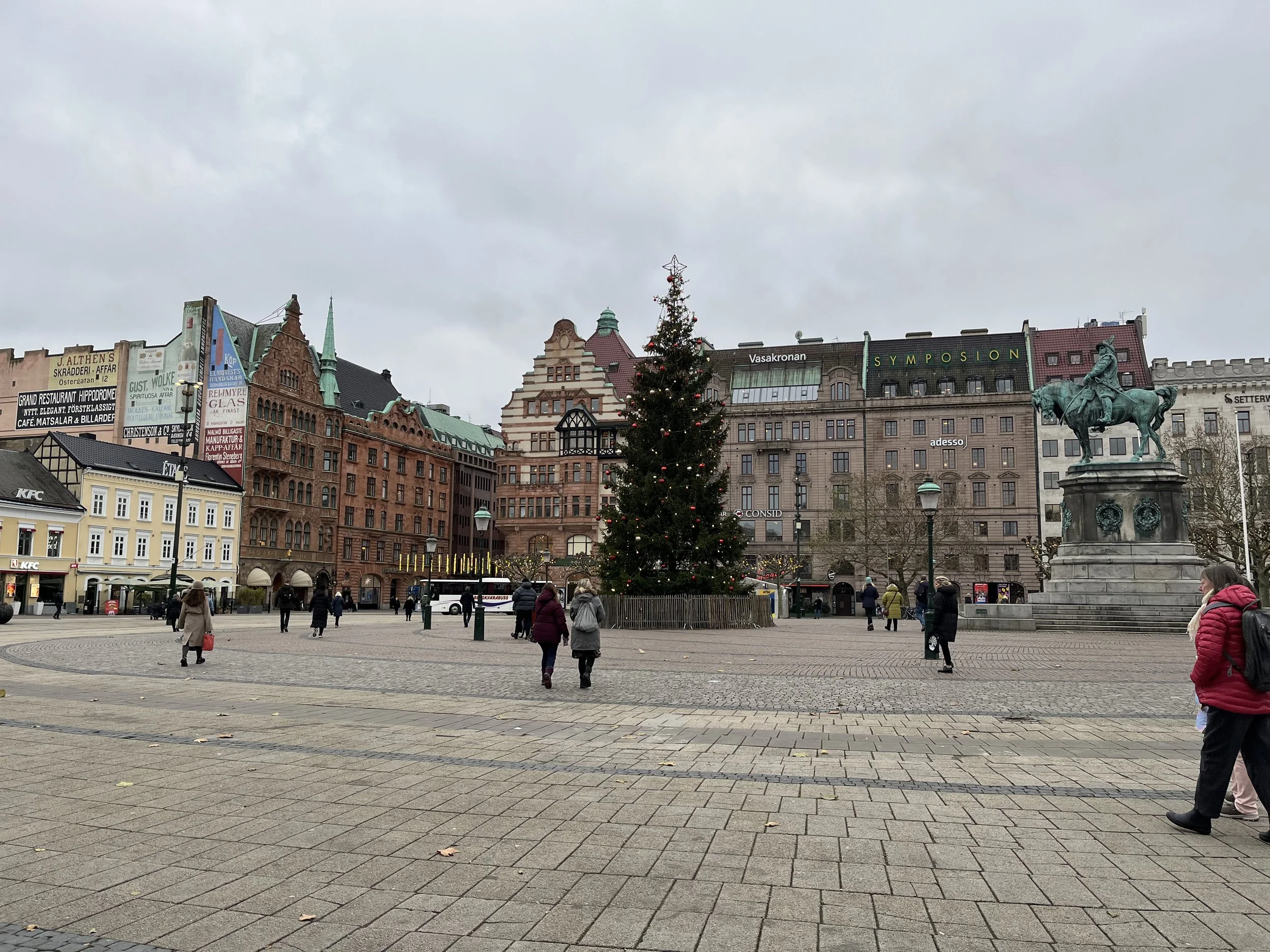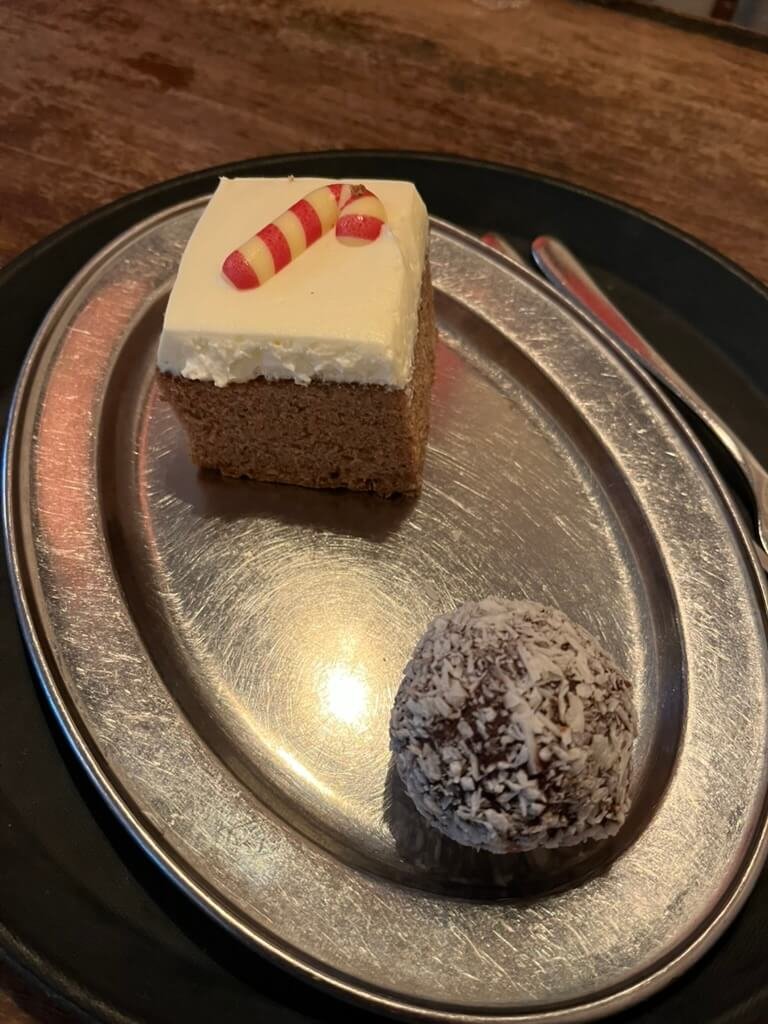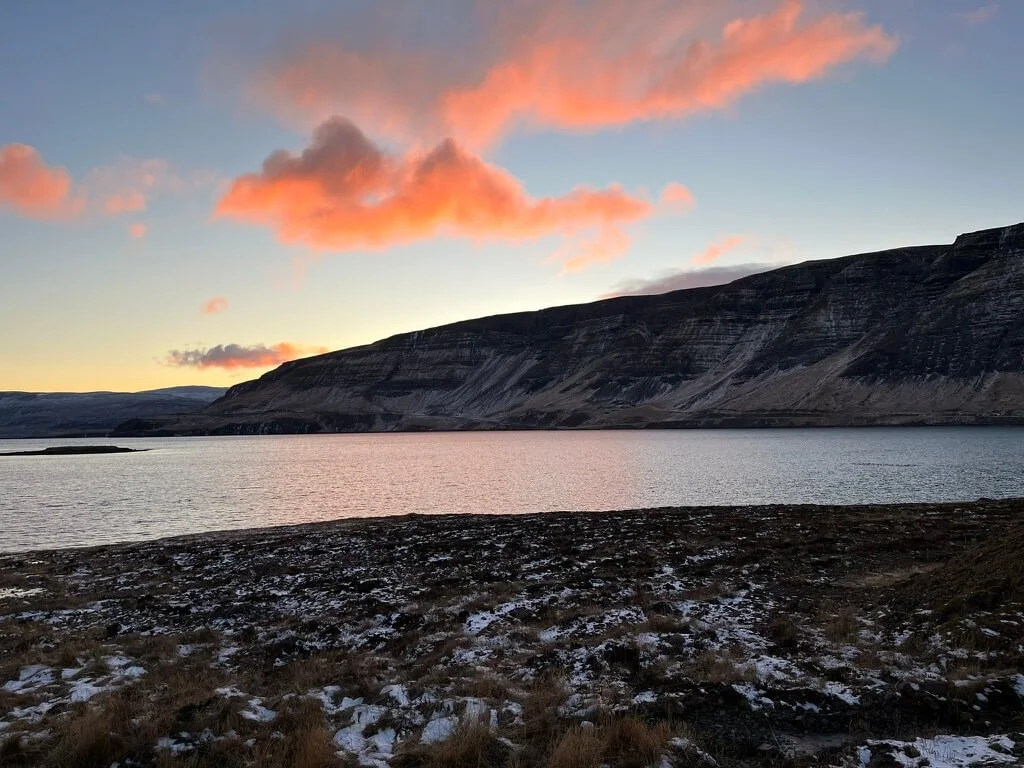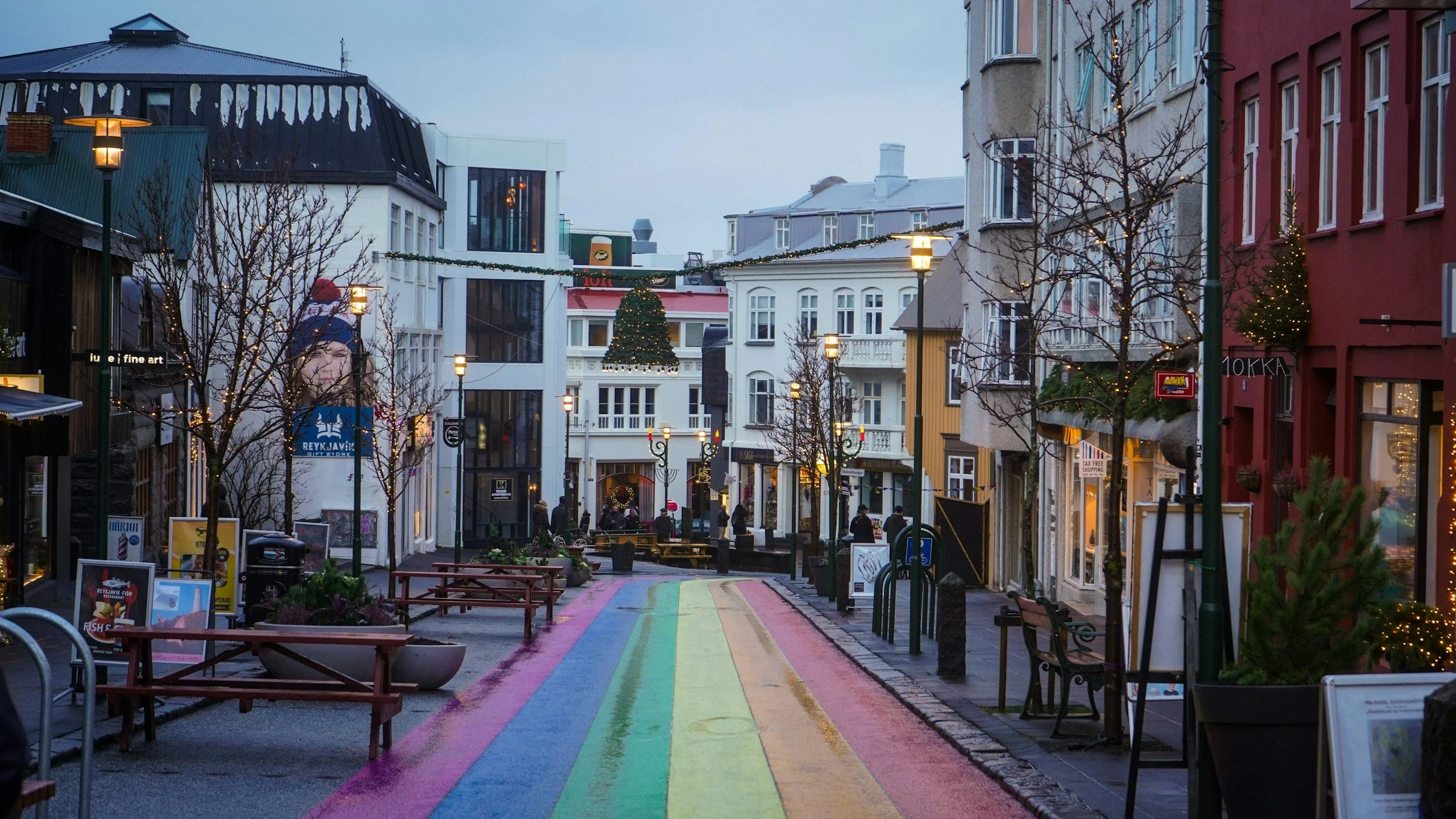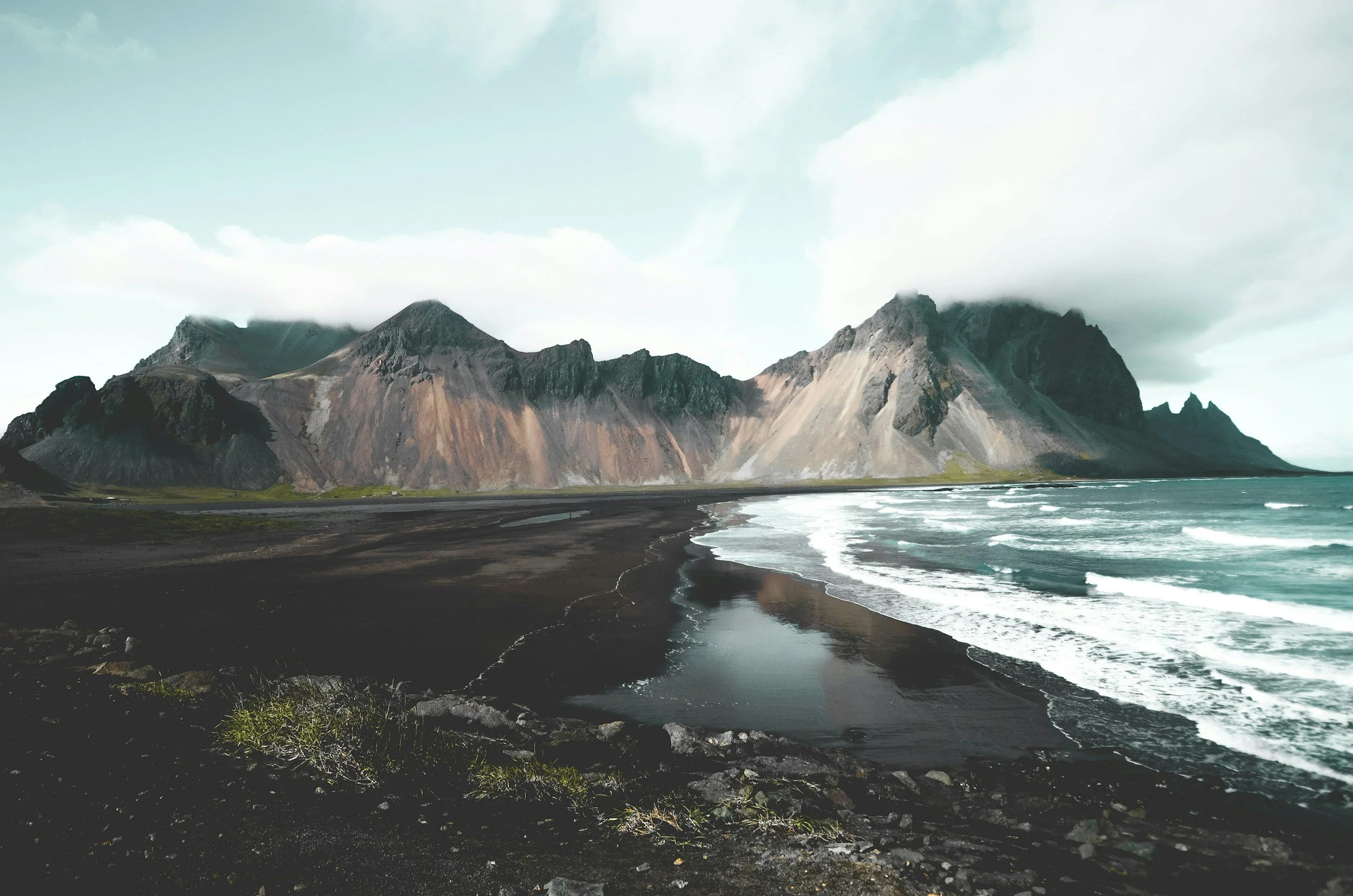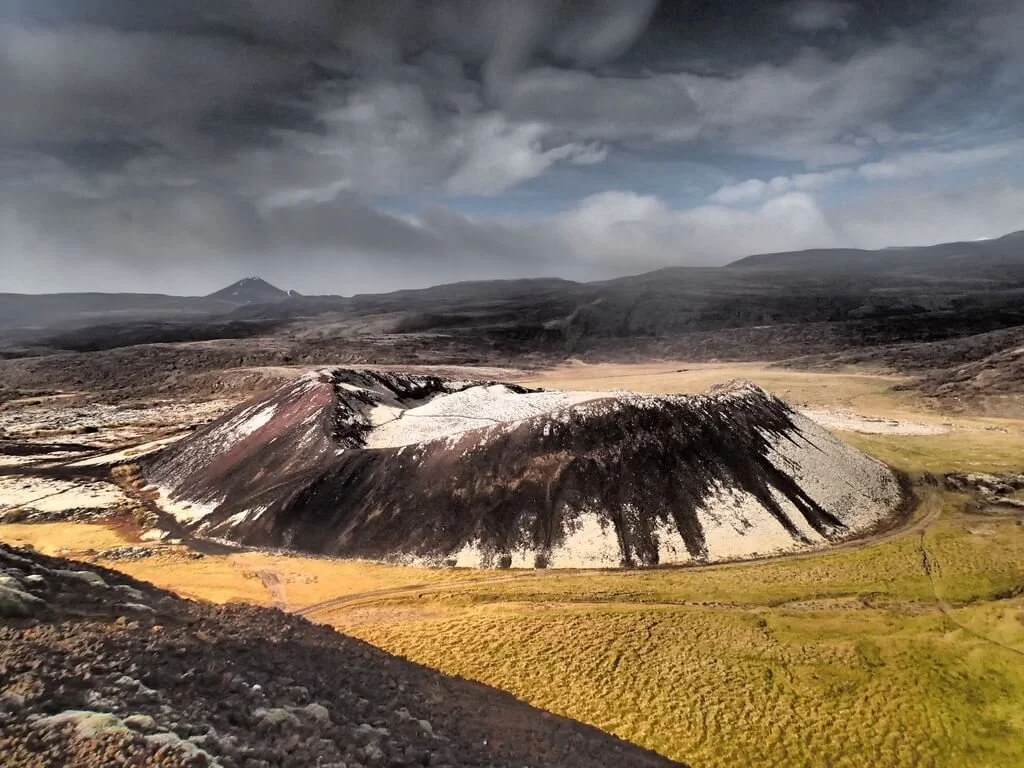7 Days in Italy: When Travel Doesn’t Go as Planned (But You Still Make It Work)
Our week in Italy didn’t go exactly as planned — there were hospital visits, slow days, and plenty of gelato-fueled recovery time. But between Florence’s golden skyline, Bologna’s comforting pasta, and Venice’s quiet canals, we still found the magic of travel — even when it wasn’t perfect.
A one-week Italy itinerary through Florence, Bologna, and Venice — with a dose of real-life travel chaos and how we made the best of it.
Italy had been on our travel wish list for years—art, history, pasta, and wine all wrapped up in a week of adventure. What we didn’t expect was that our trip would turn into a crash course in rolling with the punches. Between my sudden GI illness and my husband’s lingering cold, we learned firsthand that sometimes travel isn’t picture-perfect. Still, even when things don’t go as planned, Italy has a way of shining through.
Traveling childfree gave us the flexibility to adjust quickly—no nap schedules, no extra logistics—just the two of us figuring out how to make the best of things. Here’s how our 7 days in Italy itinerary unfolded, health hiccups and all.
If you enjoy honest, low-fuss itineraries, check out my 5-day North Island New Zealand Itinerary.
Table of Contents Show
Day 1: Florence Arrival
We landed in Florence in the afternoon and dove straight into Italian life with dinner at All’Antico Vinaio, famous for its enormous sandwiches stuffed with local ingredients. Fueled up, we strolled the city: gazing at the Duomo at golden hour, crossing the Ponte Vecchio, and soaking in sweeping views from Piazzale Michelangelo. It felt like the dream start to the trip we’d been planning.
Highlights
Duomo (Cathedral of Santa Maria del Fiore): Florence’s most iconic sight, this grand cathedral dominates the skyline with its red-tiled dome and marble-striped facade. Climb to the top for sweeping city views or simply admire its architectural brilliance from the square below.
Ponte Vecchio: A medieval bridge with a storybook feel, Ponte Vecchio is lined with jewelry shops that shimmer in the sunlight. Stroll across for postcard-perfect views of the Arno River — especially as the evening lights start to glow.
Piazzale Michelangelo: Perched above the city, this famous viewpoint offers one of the most breathtaking panoramas in Italy. Come at sunset to watch Florence bathe in golden light as the Duomo and Arno River stretch out below.
Duomo (Cathedral of Santa Maria del Fiore)
Day 2: An Unplanned Hospital Adventure
In the middle of the night, things took a turn—I became violently ill and ended up taking an ambulance to the hospital. After hours of IV fluids, bloodwork, and waiting, I was discharged around 4 a.m. With no taxi showing up, we walked back to our hotel in the dark, exhausted but relieved.
While I spent the day recovering (thank goodness for HGTV in Italian), my husband explored Florence solo. It wasn’t what we envisioned, but it was a reminder that sometimes travel forces you to slow down—whether you like it or not.
Day 3: Catching Up in Florence
Still weak but determined not to waste the day, I rallied. We headed to Mercato Centrale for a casual lunch, climbed Giotto’s Bell Tower for views over the city, and wandered Piazza della Signoria, Florence’s open-air gallery of statues and history. We had to cancel our Tuscany wine tour, but making it out at all felt like a victory.
Highlights
Mercato Centrale: A paradise for food lovers, Mercato Centrale brings together local vendors serving fresh pasta, pizza, cheese, and wine under one roof. It’s the perfect place to sample regional flavors and refuel between sightseeing.
Giotto’s Bell Tower: A masterpiece of Gothic architecture, Giotto’s Bell Tower stands tall beside the Duomo, wrapped in colorful marble panels. Climb its 414 steps for one of the best views of Florence — including the Duomo itself.
Piazza della Signoria: Florence’s open-air museum, this lively square is filled with sculptures, fountains, and Renaissance grandeur. Snap a photo with a replica of Michelangelo’s David and soak in centuries of history all around you.
Piazza della Signoria
Day 4: Bologna Detour & Onward to Venice
By now, my husband was starting to feel the tickle of a cold just as I was barely recovering. Still, we made it onto the train for Bologna, where we joined a food tour at Mercato delle Erbe. Tagliatelle al ragù, tortellini in brodo, and other regional specialties gave us a much-needed morale boost. Then it was onward to Venice, where the winding canals would become both our playground and our sickbed.
Highlights
Mercato delle Erbe: This indoor market is a local favorite for fresh produce, cured meats, and casual eateries. It’s an authentic taste of Bologna’s food culture — best enjoyed with a glass of wine during your food tour.
Fresh pasta in Bologna
Day 5: Venice in Shifts
I was improving, but my husband’s cold was in full force. We took things slowly: walking over the Rialto Bridge, sitting in Piazza San Marco, and enjoying lunch before visiting Teatro La Fenice, Venice’s storied opera house. We moved at half-speed, but Venice rewards wandering, even when you’re dragging your feet.
Highlights
Rialto Bridge: The oldest and most famous bridge in Venice, the Rialto is a must-see spot for classic canal views. Visit early in the morning or at dusk to beat the crowds and watch gondolas glide beneath.
Piazza San Marco: Venice’s grand central square, surrounded by elegant arcades, St. Mark’s Basilica, and the Campanile tower. It’s busy but beautiful — best experienced with a coffee in hand and time to linger.
Teatro La Fenice: One of Italy’s most historic opera houses, La Fenice is a stunning example of Venetian elegance. Even if you don’t see a performance, the guided tour offers a glimpse into its lavish golden interior.
Piazza San Marco
Day 6: Survival Mode
At this point, neither of us was at 100%, so we took our time as we wandered the city. We toured the Bridge of Sighs and Basilica di San Marco early, then retreated for coffee and pastries in Cannaregio (the Jewish Ghetto). The afternoon included quirky chocolate tastings at Nino and Friends, browsing at Libreria Acqua Alta, and squeezing down Calle Varisco, Venice’s narrowest street. It was a mix of sightseeing and resting in equal measure.
Highlights
Bridge of Sighs: An ornate limestone bridge connecting the Doge’s Palace to the old prison, the Bridge of Sighs is steeped in legend. Its name comes from the sighs of prisoners glimpsing Venice for the last time through its small windows.
Basilica di San Marco: This glittering Byzantine masterpiece is a feast for the eyes, filled with golden mosaics and intricate details. Arrive early to avoid crowds and take in the sheer opulence of Venice’s most famous church.
Cannaregio (Jewish Ghetto): Venice’s most authentic and peaceful neighborhood, Cannaregio offers quiet canals, cozy cafés, and deep history. It’s the perfect escape from the city’s bustle — ideal for a slow morning coffee or evening stroll.
Libreria Acqua Alta: This quirky bookstore is famous for its overflowing stacks of books stored in bathtubs and gondolas to protect them from floods. Don’t miss the book staircase in the courtyard — it’s one of Venice’s most Instagrammed corners.
Calle Varisco: Known as one of Venice’s narrowest streets, Calle Varisco is a fun, blink-and-you’ll-miss-it stop. Wander through for a quick photo and the novelty of squeezing down a passage just 53 cm wide.
Bridge of Sighs
Day 7: Murano & A Classic Gondola Ride
For our final day, we leaned into lighter joys: a ferry ride to Murano to watch glassblowers at work, gelato in the sun, a gondola ride through Venice’s side canals, and a quiet visit to Chiesa di San Zaccaria. It wasn’t the energetic finale we’d imagined, but it was quietly memorable.
Highlights
Murano: Just a short ferry ride from Venice, Murano is world-famous for its centuries-old glassmaking tradition. Watch artisans at work or browse the island’s boutiques for one-of-a-kind souvenirs.
Gelato: Because no trip to Italy is complete without it. From creamy pistachio to stracciatella, it was joy in a cone.
Gondola Ride: Touristy, yes—but drifting through side canals is still Venice at its most magical.
Chiesa di San Zaccaria: A hidden gem near St. Mark’s, this quiet church holds Renaissance masterpieces and an atmospheric crypt that often floods with lagoon water. It’s a peaceful break from Venice’s main sights.
Gelato makes everything better!
Travel Tips for When You’re Sick (Because It Happens!)
No matter how much you plan or prep, sometimes your body has other ideas. Getting sick on vacation is the worst — especially when you’re in an unfamiliar country. But here’s what we learned from our experience.
1. Don’t push yourself.
It’s tempting to power through, but rest really does speed up recovery. Missing one tour is better than being down for three days because you overdid it. Let yourself nap, stay hydrated, and embrace the slower pace.
2. Know where the nearest hospital or clinic is.
You hope you’ll never need it, but if you do, you’ll be grateful to know where to go. Bonus: no astronomical U.S. hospital bill (if you’re outside the U.S.).
3. Always have travel insurance.
It’s not glamorous, but it’s the adulting side of childfree travel. A good plan covers medical emergencies, canceled tours, and extra hotel nights if needed. It’s peace of mind you won’t regret. We use Blue Cross Blue Shield Global Solutions (full disclosure: we have not filed a claim with them).
4. Keep a mini “sick kit” in your bag.
Pack electrolyte packets, anti-nausea meds, Imodium, ibuprofen, and cold medicine at minimum. You can find pharmacies in many countries, but having your own stash saves you when an illness hits and buys you time to figure out where to get medicine if you need it.
5. Adjust expectations — not your attitude.
Some of our favorite travel memories come from the unexpected. Watching HGTV in Italian while eating crackers wasn’t on the itinerary, but it became part of the story. Travel isn’t always picture-perfect, and that’s okay.
6. Take turns caring for each other (if you’re traveling with a partner).
When you’re traveling as a couple, teamwork matters. One person might be exploring solo (and picking up meds from the local pharmacy) one day while the other recovers. It’s part of navigating life while traveling.
Final Thoughts: When Travel Gets Messy
To be totally honest, this wasn’t the trip we pictured. We missed Tuscany’s rolling hills, had to cancel plans, and spent more time nursing ourselves back to health than sipping wine. But here’s what we learned:
Travel rarely goes perfectly. Even in Italy.
Traveling childfree gave us the flexibility to adapt. We didn’t have to juggle kids’ needs on top of our own, which made it easier to slow down when we needed to.
Sometimes the best memories come from the unexpected. Like watching Italian home-renovation shows in a hotel bed, or laughing at the absurdity of walking home from the hospital at 4 a.m.
Italy reminded us that travel isn’t about checking boxes—it’s about the experience, however messy it might be. And sometimes, the stories you didn’t plan for are the ones that stick with you the longest.
Have you ever had a trip go sideways? How did you make the best of it? Share your story in the comments!
Day Trip to Malmö from Copenhagen: Train, Bus & Childfree Travel Guide
Take an easy, scenic day trip from Copenhagen to Malmö, Sweden — no hotel changes, no airport lines, just a short train or bus ride across the Øresund Bridge. This guide shows you the easiest ways to travel between Denmark and Sweden, top things to do in Malmö in one day, and practical tips for a budget-friendly, childfree-friendly Scandinavian getaway.
A day trip to Malmö, Sweden from Copenhagen is easy, scenic, and surprisingly stress-free — the kind of trip that’s made for adults who travel light and appreciate a bit of spontaneity in their itinerary. This is a relaxed, budget-conscious way for childfree travelers to experience a second Scandinavian country without adding a hotel change or airport security line to your plans.
If you're basing yourself in Copenhagen (here’s how we spent 4 days there), Malmö makes for an easy international side trip. This guide covers how to get from Copenhagen to Malmö, what to do there, and why it’s a perfect day trip for travelers who enjoy a slower pace, coffee breaks, and exploring on foot.
Why Take a Day Trip to Malmö from Copenhagen?
This budget-friendly day trip to from Malmö to Copenhagen gives you that “I’m in a different country” feeling with minimal effort. Malmö feels similar to Copenhagen, yet unique in it’s own way. It’s more compact, a little quieter, and gives you a taste of Sweden without needing to repack your suitcase. It’s ideal for a childfree day trip: no long lines, no set schedule, and no pressure to squeeze in lots of activities. Instead, you can spend the day wandering, eating, and soaking up the atmosphere — with as much or as little structure as you like.
Øresund Bridge
How to Get from Copenhagen to Malmö
Train (Quickest Option):
Trains from Copenhagen Central Station to Malmö Central Station run roughly every 20–30 minutes. The ride takes around 40 minutes, and no reservations are needed — just buy your ticket at the station or via the DSB app.
Cost: Around DKK 100–120 (~$15-18 USD) round trip
Tickets: Get them at a kiosk, machine, or on the DSB app
Bring ID: Border checks are random but possible, so carry your passport or national ID
Bus (Slightly Cheaper Option):
If you're looking for the cheapest way to do a day trip to Malmö from Copenhagen, taking the bus can save you a few bucks compared to the train. It’s not quite as fast or flexible, but it’s still a straightforward option — especially for early risers or night owls.
Note: Buses typically depart from Copenhagen Airport (CPH), not the city center.
Bus Companies That Run Between Copenhagen and Malmö:
FlixBus
Frequency: Multiple departures daily (including early morning and late night) From Copenhagen Airport to Malmö Central Station
Duration: ~1 hour to 1 hour 20 minutes
Cost: From €10–€20 (~$10-20 USD) one way
Booking: flixbus.com or FlixBus app
Vy Bus4You
Frequency: Multiple departures daily (mostly afternoon and night) from Copenhagen airport to Malmö C Norra Vallgatan
Duration: ~45 minutes
Cost: From DKK 109 (~$16 USD) one way
Booking: vy.se
Copenhagen Central Station
Top Things to Do in Malmö in One Day
With its laid-back vibe and mix of old-meets-modern charm, Malmö is ideal for adult travelers who prefer to wander without a schedule. Below some of Malmö’s highlights:
Stortorget & Lilla Torg: Two beautiful public squares with cozy outdoor cafés and great people-watching. Both are less than a 10-minute walk from Malmö Central Station.
Malmö Castle (Malmöhus Slott): A 16th-century fortress with small museums inside — worth a look if you appreciate history. You may want to grab an Uber for this one — it’s about a 20-minute walk from the train station.
Fika Culture: Sweden’s famous coffee-and-pastry ritual. Stop at Lilla Kafferosteriet (a 10-minute walk), or any other coffee shop for that matter — you can’t go wrong!
Ribersborgsstranden (the "city beach"): A chill spot to walk along the coast and see the Øresund Bridge. Even in cooler months, it’s peaceful and scenic. Grab an Uber to go here as well, as it’s a bit further out.
Turning Torso: A quick photo stop to admire Scandinavia’s tallest building and Malmö’s modern architecture. You can get a glimpse of it from many parts of the city but to see it up close you’ll want to Uber.
Malmö cityscape with Turning Torso
Practical Tips
Currency: Sweden uses SEK (Swedish Krona) — but most places accept credit cards, so no cash needed.
Language: Swedish is the official language, but many people also speak English.
Travel light: No need to bring much — just your passport and whatever else you need for the day.
Timing: Leave in the morning, be back in Copenhagen by dinner time, or have an authentic Swedish dinner in Malmö if you’re feeling spontaneous.
Is a Malmö Day Trip Worth It for Childfree Travelers?
Yes — it’s low-fuss, scenic, and calm in all the right ways. You can explore at your own pace, with no need to plan around schedules or keep anyone else entertained. Malmö is a delightful mix of culture, architecture, and Scandinavian café life — all just one train ride from Copenhagen. If your ideal day trip includes wandering quiet streets, trying great coffee, and casually crossing an international border, Malmö is a perfect fit.
Staying in Copenhagen? Don’t miss my Copenhagen itinerary for more relaxed, adult-friendly travel ideas and to find out what we did on our day trip to Malmö.
Have you done a day trip to Malmö — or are you thinking about it? Drop your questions or experiences in the comments. I’d love to hear how you spent your time there.
How to Spend 4 Days in Copenhagen in Winter: A Magical, Food-Filled Itinerary
Copenhagen in winter is pure Nordic magic—think twinkling Christmas markets, castles dusted with frost, and food halls filled with warming comfort food. This 4-day itinerary blends festive sights, historic charm, and cozy dining, with a side trip to Sweden for good measure—perfect for childfree travelers who love slow-paced city breaks with memorable meals.
Nyhavn aglow with festive lights.
If you're looking for a cozy, festive, and walkable European city vacation, Copenhagen in November delivers. After our 3-day stopover in Iceland, we flew into Denmark’s capital for four days of castles, Christmas markets, hygge, and surprisingly excellent food.
This 4-day Copenhagen itinerary is perfect for couples or childfree travelers who want a balance of sightseeing, downtime, and delicious bites—without packing every hour. If crisp winter air, charming streets, and cozy bakeries filled with the scent of delicious pastries sound like your kind of getaway, this itinerary’s for you.
Day 1: Arrival & Tivoli Christmas Market (A Perfect Winter Welcome to Copenhagen)
We landed in Copenhagen around 11:45am and made our way into the city via a quick and easy train to Central Station. Lunch was our first stop—open-faced smørrebrød at Tivoli Food Hall—then we wandered near City Hall Square and killed time until check-in. After dropping our bags and regrouping (because travel days are rough), we headed to Tivoli Gardens to kick off our trip with Christmas lights, gløgg, and a seriously good raclette sandwich.
Highlights:
Tivoli Food Hall: Located right next to the iconic Tivoli Gardens, this modern indoor market is part of Copenhagen’s long tradition of balancing sleek design with cozy community spaces. We grabbed lunch here and started with classic smørrebrød—open-faced Danish sandwiches layered with butter and a variety of fresh toppings on rye bread. The atmosphere felt lively but not chaotic, and it was a perfect, low-effort intro to the local food scene.
Rådhuspladsen (City Hall Square): This bustling square is the heart of central Copenhagen and has long been a hub for civic events. We stopped by to peek into the historic City Hall, which dates back to 1905 and was inspired by medieval Danish architecture. They happened to be setting up for a wedding in the main atrium, and it was stunning—grand and romantic with a huge skylight above and a hint of Scandinavian holiday decor.
Tivoli Gardens: Opened in 1843, Tivoli is one of the world’s oldest amusement parks and still one of the most charming. Between the twinkling lights, nostalgic rides, cozy gløgg stands, and festive market stalls, it completely lived up to the hype. We rode a few rides, warmed up with mulled wine, and shared a raclette sandwich that honestly might have ruined all future sandwiches for us. It was that good.
Day 2: Palaces, Pastries & Cozy Scandinavian Dining
We started the day with one of the best hotel breakfasts we’ve had in Europe—think Danish pastries from the bakery next door, local meats and cheeses, and wellness shots. After thoroughly (and happily) stuffing ourselves, we walked through some of Copenhagen’s most photogenic spots, soaking up tons of history and local charm followed by an intimate dinner at Höst.
Highlights:
Nyhavn: This 17th-century harbor is easily one of Copenhagen’s most iconic sights, with its colorful townhouses, docked wooden boats, and postcard-perfect canal views. We went first thing in the morning, which meant no crowds. We almost caught a canal boat tour—but missed it and didn’t feel like waiting for the next one. Still, a great spot to walk through.
Farumhus Bakery: Tucked just around the corner from Nyhavn, we stumbled into this little bakery and boy, were we happy we did. Farumhus has been around since 1947 and is known for sticking to traditional baking methods—no shortcuts, just flaky, buttery perfection. We grabbed a scone and a rumkugler (traditional Danish rum ball) and honestly, we’re still thinking about it.
Frederik’s Church (The Marble Church): Known for its massive green copper dome—one of the largest in Scandinavia—this church was inspired by St. Peter’s Basilica in Rome and took nearly 150 years to complete. Inside, it’s beautifully serene. We sat quietly in the pews and just took it all in: the arches, the light, the silence.
Amalienborg Palace: The official residence of the Danish royal family. We arrived around 11:15am for the changing of the guard at noon. Heads up: there’s quite a bit of lead-up (like, almost an hour of gradual setup and positioning), but it was cool to see the precision and tradition behind it all.
Christiansborg Palace Ruins: Beneath the current palace lies a fascinating layer of Copenhagen’s past, including ruins from two earlier castles destroyed by fire. You can walk through excavated foundations and remnants dating back to the 12th century. While it dragged a little in places (there was more emphasis on witchcraft than we were interested in), the ruins were cool to see and are worth a visit if you’re into royal history.
Christmas Markets: Copenhagen in November means Christmas markets on every corner—each with its own vibe but all filled with twinkly lights, cozy treats, and the smell of cinnamon and mulled wine in the air. We popped into several during our trip and loved grazing our way through them—Belgian waffles, æbleskiver (pancake balls), gløgg (mulled wine), and more. There were also lots of vendors selling handmade goods and we picked up some beautiful glass Christmas ornaments.
Höst: If you're looking for that quintessential New Nordic dining experience—Höst delivers. Tucked away in central Copenhagen, this award-winning spot serves a multi-course tasting menu that somehow manages to feel upscale and cozy. We booked an early dinner and loved the warm lighting, rustic-modern decor, and creative dishes (including a few surprise courses between courses). It's a splurge, but one that feels totally worth it if you appreciate excellent food and a vibe that’s equal parts stylish and intimate.
Day 3: Castles, Gardens & Food Hall Favorites
After another excellent hotel breakfast (seriously, we never got tired of it), we layered up and headed out—even though the weather wasn’t exactly on our side. It was cold, gray, and drizzly for most of the day, but we pushed on and made the most of it. First up was Rosenborg Castle and the surrounding King’s Garden, which was peaceful and photogenic despite the winter gloom. For lunch, we warmed up at Torvehallerne Food Hall, then spent the rest of the afternoon visiting Christiansborg Palace (again) and Christiansborg Tower.
Highlights:
Rosenborg Castle: Built in the early 1600s by King Christian IV, this fairy-tale castle is now home to Denmark’s crown jewels and royal regalia. It’s compact, beautifully preserved, and full of ornate details without feeling overwhelming. One of the rooms was under construction while we were there and it was cool to get a glimpse into the restoration process.
Kongens Have (King’s Garden): The oldest royal garden in Denmark, and still one of the loveliest spots in the city—even in the off-season. Quiet paths, sculptures, and locals out for a walk made it a nice break from the busier sights.
Torvehallerne Food Hall: A buzzing indoor market with everything from fresh produce to global street food and Danish sweets. My husband went for freshly friend empanadas, I had a warming red lentil curry, and we split a flødeboller (a fluffy chocolate-covered marshmallow treat). All were amazing, unsurprisingly.
Christiansborg Palace (Round 2): We returned to explore more of the palace, this time visiting the royal reception rooms and museum. It’s impressive how much is packed into this one complex—you could easily spend a few days here. Our favorite part was the treasury which contained the crown jewels and regalia, they were dazzling!
Christiansborg Tower: We stumbled upon this hidden gem when we almost (accidentally) walked into a Danish legislative session in progress. The security guard very politely told us that we couldn’t go inside but that we should check out this tower which was around the corner. We took an elevator to the for panoramic views over Copenhagen. It’s free and relatively uncrowded, with a great perspective of the city’s rooftops and spires.
Day 4: Day Trip to Malmö, Sweden
After yet another excellent hotel breakfast, we took a scenic 40-minute train ride across the Øresund Bridge to Malmö, Sweden. It’s an easy, affordable day trip from Copenhagen, with a laid-back vibe, cozy cafés, and its own dose of holiday magic. If you want to know more about how to plan this day trip, check out my Malmö day trip guide.
Highlights:
Malmö Castle & Park: A quiet, eerie spot with centuries of history. Originally built in the 1500s, the castle has served as everything from a royal residence to a prison. The surrounding park adds a peaceful contrast and makes for a nice walk, even in winter. We definitely felt the creepy vibes!
Malmö Christmas Market: Smaller and more relaxed than Copenhagen’s Christmas markets, but still full of charm. We grabbed incredible Swedish hot dogs from Belo’s with all the toppings and ended up chatting with the owner—he uses his grandfather’s pickle recipe! We also tried Swedish glögg, which came topped with a layer of dairy-free cream and was just as warming and delicious as the Danish version.
Lilla Kafferosteriet – The perfect stop for a proper Swedish fika (a coffee break, but better). This café felt cozy and local, and our gingerbread cake and arraksboller (a Swedish rum ball) hit the spot on a chilly afternoon.
City Center – Malmö’s compact downtown is easy to explore on foot. We picked up some handmade souvenirs, ducked into side streets, and appreciated the historic Swedish architecture. No big plans—just a relaxed few hours soaking up Malmö’s beauty.
Final Thoughts: Is Copenhagen Worth Visiting in Winter?
Copenhagen in November is cold and gray, yes—but it’s also cozy, festive, and full of quiet charm. Between the Christmas markets, royal palaces, world-class food halls, and that effortlessly cool Scandinavian design, it’s a great winter city to explore without feeling overwhelmed. We spent four days here after a 3-day Iceland stopover, and it was just the right amount of time to experience the city at a relaxed pace.
If you’re traveling childfree and looking for a destination that’s clean, calm, and built for wandering—Copenhagen delivers. It’s walkable, beautifully lit in winter, and full of spots to duck in for a hot drink or fresh pastry when the weather turns drizzly (which it often does). You won’t need a packed itinerary to enjoy it—just an appetite and a warm jacket.
Planning your own winter trip to Copenhagen? Let me know in the comments what you're most excited for—or if you’ve been, what spots I should check out next time! And if you found this itinerary helpful, consider bookmarking it or sharing it with a travel buddy.
3-Day Iceland Stopover Itinerary: Best Hot Springs, Bakeries & Glacier Adventures from Reykjavik
Break up your trip to Europe with a 3-day Iceland stopover packed with cozy bakeries, stunning hot springs, and one epic glacier adventure. From Reykjavik’s coffee scene to soaking in oceanfront pools and climbing a vertical wall of ice, this itinerary blends relaxation and adrenaline—perfect for childfree travelers who want to maximize their time without the chaos.
Reykjavik
If you're flying to Europe with Icelandair or PLAY, a stopover in Iceland is the perfect way to break up the trip and pack in some adventure. When we returned to Iceland on our way to Copenhagen last November, we upgraded from budget to bougie (well, relatively bougie) with a 3-day stopover full of cozy bakeries, stunning hot springs, and an ice climbing tour that brought the adrenaline.
Here’s how we made the most of our fast-paced but still relaxing 3-day Iceland stopover—no kids, no chaos, just the perfect mix of chill and thrill.
Day 1: Jet Lag and Sky Lagoon
We landed first thing in the morning and made our way to Reykjavik. After grabbing breakfast, we wandered around downtown Reykjavik, popping into local shops and boutiques. Even if you're not buying anything, it's a great way to soak in the Nordic aesthetic and get your steps in. The jet lag is always a struggle for us and we’ve learned that it’s best to stay active and avoid the urge to faceplant into our hotel bed at 4pm. Then we headed to our steamy next destination—Sky Lagoon.
Why Sky Lagoon Is Not Worth It (In Our Opinion)
If you only have time for one hot spring during your Iceland stopover, I personally wouldn’t pick Sky Lagoon. Sky Lagoon is convenient to get to from Reykjavik, with beautiful ocean views and sleek, modern facilities. However, we were underwhelmed by the 7-step ritual (included in the premium package)—loved the cold plunge and sauna with a view, but overall it felt a bit overrated for the price. It was also pretty crowded and full of people more focused on creating content than relaxing. Keep reading for our recommendation for one of the best hot springs in Iceland.
Where We Ate
Reykjavik Roasters: One of the best coffee spots in the city. This was our first stop as we landed early and needed caffeine and carbs immediately.
Baka Baka: A local bakery known for its flaky pastries and cozy vibe. We devoured some sweet treats while thawing out from the frigid Iceland wind.
Icelandic Street Food: A casual dinner spot located in the heart of Reykjavik. Their traditional lamb soup and tomato soup are perfect if you're craving something hearty and local. Their bread is incredible—make sure to order your soup in a bread bowl!
Then… we crashed. Jet lag: 1, us: 0. At least we made it until 8pm, right?
Day 2: Hot Springs, Hot Dogs & Hidden Gems
After an early breakfast of (more) pastries, we made the 45-minute drive out to Hvammsvik Hot Springs—and honestly, this might have been our favorite discovery of the entire trip.
Hvammsvik Hot Springs: Iceland's Hidden Gem
This hot spring complex sits right on the ocean, with a mix of natural rock pools and manmade soaking spots that blend into the landscape. It’s low-key, stylish, and less touristy than the bigger lagoons. There’s no official cold tub here—the North Atlantic Ocean is your cold tub. Take a swim at your own risk (we did and it was, as expected, freezing!). Hvammsvik felt more peaceful, more local, and more connected to nature. If you're looking for an adult-focused, authentic Icelandic soak without the scene, Hvammsvik is your spot—but if convenience and amenities are your priority, Sky Lagoon is still a solid (though touristy) choice.
Where We Ate
Brauð & Co: A colorful little bakery where everything smells like butter and magic. Their cinnamon rolls and pretzel croissants are the real deal.
Bæjarins Beztu Pylsur: Reykjavik’s most iconic street food stand. We found the hots dogs to be underwhelming (we had much better ones on our 7-day Ring Road trip), but if you’re in the area check it out for yourself.
Mama Reykjavik: A warm and quirky spot with hearty dishes that blend Icelandic ingredients with global flavors. My husband went for a creamy yellow curry, with chickpeas and potato chunks and I had a tasty broccoli soup that was chock full of fresh veggies. Both meals came with—you guessed it—delicious sourdough bread and local butter. Europe just does bread so much better.
Day 3: Ice Climbing on a Glacier
For our final day, we went full adventure mode with an ice climbing and glacier hike tour on Sólheimajökull through Arctic Adventures. It’s about a two-hour drive from Reykjavik, so prepare for an early start—but it’s 100% worth it. If you’re looking for a day trip from Reykjavik a bit further off the beaten path, this is a great option.
How it Went
The tour was hands down the most exhilarating thing we did in Iceland. After meeting at the glacier parking lot, we geared up with crampons, helmets, harnesses, and ice axes before heading out with our guides onto the ice. The hike across the glacier was surreal—deep crevasses, glowing blue ice, and the constant sound of cracking beneath our feet as the glacier shifted below us.
The real highlight? Climbing a vertical ice wall. It looked intimidating, but the guides were incredibly supportive and made sure everyone felt safe (no prior experience needed, just some basic fitness and a willingness to go for it). If you're up for something active and unforgettable, this is a must-do.
Afterward, we drove back to Reykjavik feeling tired, cold, and accomplished. We spent the evening packing our bags and had the most restful (and well-deserved) sleep before heading to the airport early the next day.
View of Sólheimajökull
Final Thoughts: Is a 3-Day Stopover in Iceland Worth It?
Absolutely. Whether you're on your way to Europe or heading back home, a 3-day stopover in Iceland is just enough time to soak in the landscapes, relax in hot springs, indulge in Reykjavik’s food scene, and try something adventurous.
You don’t need a rental car the whole time (just for the Hvammsvik and glacier days), and Reykjavik is super walkable. This itinerary balances rest and exploration, with a little luxury sprinkled in—perfect for childfree couples or solo travelers who want to experience Iceland without the rush.
Planning your own Iceland stopover? Drop your thoughts and questions in the comments and check out my full 7-Day Iceland Ring Road Itinerary if you’re thinking of staying longer—and subscribe below for more childfree, low-fuss travel tips.
7-Day Iceland Ring Road Itinerary (Childfree & Budget-Friendly)
Ready to take on Iceland’s wild landscapes with maximum flexibility? This detailed 7-day Ring Road itinerary shares exactly how we explored the entire country—on a tight budget, without kids, and with plenty of spontaneity. From waterfalls to volcanoes (and way too many gas station hot dogs), this guide is for adventurous, independent travelers who don’t mind a little rain—or a lot of driving.
Iceland had been calling to us for years. We were instantly drawn to its rugged landscapes, moody weather, and quiet solitude and couldn’t get it out of our minds. After what felt like years of planning, we finally made it happen.
We were in our early 30s, running on granola bars, ramen noodles, and way too much ambition. This wasn’t a luxe getaway—it was a low-budget, pack-your-own-snacks kind of trip. We didn’t have much to spend, but we were determined to see as much of Iceland as humanly possible in one week.
No kids. No rigid plans. Just us, our comically under-equipped VW Golf, and a lot of weather.
This post is our real 7-day Iceland itinerary—complete with the stops, the lessons, and a glimpse into what it’s like to take on this wild country childfree. It’s fast-paced, but totally doable if you’ve got the stamina (and a decent rain jacket).
Table of Contents Show
Day 1: Arrival + Reykjavík
KEF Airport → Reykjavík
After a long red-eye flight and very little sleep, we landed at Keflavík International Airport, picked up our rental car, and sleepily made the 50-minute drive to Reykjavík. When we arrived, we immediately hit the streets and began exploring because 1) We couldn’t check into our hotel until the afternoon and 2) The jet lag was so real and we knew we’d be toast if we stopped moving. We wandered wherever we felt like—no agenda, no schedules, just chasing warm drinks and cozy corners to warm up in. Reykjavík is perfect when you can travel light, both literally and figuratively.
Hallgrímskirkja: One of the most iconic landmarks in Reykjavík, this towering Lutheran church is inspired by Iceland’s basalt columns. Visitors can take an elevator to the top for sweeping views of the city and surrounding mountains. We were stunned by its unique architecture!
Sólfar (Sun Voyager): A striking steel sculpture located on the waterfront, designed to represent a dreamboat and an ode to the sun. It's a popular photo stop, especially at sunrise or sunset.
Harpa Concert Hall: A modern architectural gem made of geometric glass panels that reflect the changing light. It hosts concerts and events, but is also open to the public for exploring and enjoying the harbor views. We marveled at the unique design of the interior staircases.
Laugavegur Street: The main shopping and dining street in Reykjavík, lined with boutiques, souvenir shops, cafes, and bars. It’s the best place to get a feel for the city’s culture and do some people-watching.
Skólavörðustígur (Rainbow Street): One of Reykjavík’s most photographed spots—a vibrant, rainbow-painted road leading up to Hallgrímskirkja. It’s lined with shops and cafes, making it a fun (and colorful) place to stroll or snap a few photos.
Skólavörðustígur (Rainbow Street)—A celebration of Reykjavík Pride.
Day 2: Golden Circle + Hella
Reykjavík → Þingvellir → Haukadalur → Gullfoss → Hella
Early the next morning, we enjoyed a quick European-style breakfast at our hotel and then hit the road toward the first stop on our Iceland Ring Road itinerary: The Golden Circle. The Golden Circle is a popular 300-kilometer (190-mile) loop that includes Þingvellir National Park, Haukadalur Geothermal Area, and Gullfoss Waterfall. It’s the most visited part of Iceland for a reason—the natural beauty is simply unmatched. The sights are stunning, but we were not prepared for the sheer number of tour buses and selfie sticks we encountered.
Þingvellir National Park: A UNESCO World Heritage Site where the North American and Eurasian tectonic plates meet. It’s also the historic site of Iceland’s first parliament, and features dramatic cliffs, waterfalls, and walking trails. My husband braved the Silfra fissure with a snorkel while I took a scenic drive. Both were stunning!
Haukadalur Geothermal Area: A geothermal valley home to Iceland’s most famous geysers, including Strokkur, which erupts every 5–10 minutes. The area also features bubbling mud pots and steaming vents surrounded by walking paths.
Gullfoss Waterfall: One of Iceland’s most iconic and powerful waterfalls, Gullfoss plunges in two dramatic stages into a rugged canyon. There are multiple viewing platforms, and on sunny days you’ll often catch rainbows in the mist.
Hella: Our home for the night. One of our favorite affordable eats from the trip was the Icelandic hot dogs we got from a gas station—cheap, surprisingly delicious, and perfect after a long day of driving.
Day 3: South Coast
Hella → Seljalandsfoss → Skógafoss → Reynisfjara → Svartifoss → Jökulsárlón → Höfn
From waterfalls to glaciers, this stretch of our 7-day Ring Road itinerary packed in some of the most jaw-dropping scenery of the trip. We covered a lot of ground in one day, but the weather showed up for us—mostly sunny, warm(ish), and clear enough to see every dramatic cliff and coastline. These are the highlights, in the order we hit them, and every single one was worth the stop.
Seljalandsfoss: One of Iceland’s most unique waterfalls, where you can walk behind the cascade for a 360° view of the falls and surrounding cliffs. Bring a rain jacket—it’s misty but unforgettable.
Skógafoss: A massive, 60-meter waterfall that’s both powerful and photogenic. On sunny days, the spray often creates vivid rainbows at its base. We raced up the stairs to the top of the waterfall to take photos before the droves of tourists arrived and it was well worth the workout.
Reynisfjara Beach: A black sand beach near Vík known for its dramatic basalt columns, sea stacks (Reynisdrangar), and dangerously strong waves. We were astounded by the natural beauty of this iconic coastal landscape.
Svartifoss: Located in Vatnajökull National Park, this waterfall is framed by dark basalt columns and reachable via a moderate hike. It’s a rewarding stop for both the scenery and the geology.
Jökulsárlón Glacier Lagoon + Diamond Beach: A surreal glacial lagoon filled with floating icebergs, often drifting out to sea. Just across the road, Diamond Beach is where pieces of ice wash ashore, glittering like gems on the black sand.
Höfn: A small fishing town in southeast Iceland, known for its views of Vatnajökull glacier and local lobster dishes. It’s a good overnight stop with a few restaurants and gas stations—the burger joint we went to was pricey, but totally hit the spot.
Day 4: Southeast
Höfn → Vestrahorn → Búlandstindur → Lagarfljót → Hengifoss → Egilsstaðir
This stretch of the trip involved fewer miles but just as many sights. We took a sizable detour inland to visit Lagarfljót and hike to Hengifoss. It felt like a different side of Iceland: quieter, wilder, and less visited. The weather decided we’d had enough sunshine and hit us with a sudden shift to winter with clouds and freezing rain, but we didn’t have to worry about keeping anyone dry or entertained. Just us, our rain jackets, and the road heading north.
Vestrahorn: A striking, jagged mountain on the Stokksnes Peninsula, known for its dark sand dunes and mirror-like reflections on calm days. It’s a photographer’s dream and one of the most cinematic spots in Iceland.
Búlandstindur: A uniquely symmetrical, pyramid-shaped mountain that rises steeply from the coastline. Often shrouded in mist, it stands out even among Iceland’s dramatic peaks. We could hardly believe our eyes.
Lagarfljót: A long, glacial lake near Egilsstaðir rumored to be home to a legendary sea serpent—often called Iceland’s Loch Ness. Myth aside, it’s a beautiful drive with forested hills and calm waters.
Hengifoss: One of Iceland’s tallest waterfalls, framed by red clay and basalt layers. The hike is steep and takes about an hour each way, but the view of the falls (and a bonus smaller one along the way) makes it worthwhile.
Egilsstaðir: The largest town in East Iceland and a good place to refuel, grab groceries, or spend the night. We did all of the above while exploring the remote eastern region. Be warned—groceries in Iceland (and things in general) are very expensive. Like three-dollars-for-an-apple expensive.
Vestrahorn—Iceland’s most photogenic mountain.
Day 5: North
Egilsstaðir → Dettifoss → Krafla → Námafjall → Goðafoss → Akureyri
This was the day we arrived on what appeared to be another planet. We left the green fjords behind and entered a landscape that felt straight out of a sci-fi film, with some of the best Ring Road stops. Steam vents, sulfur clouds, lava fields—plus a few stunning waterfalls for contrast. Here's what we hit on the road to Akureyri.
Dettifoss: Known as the most powerful waterfall in Europe, Dettifoss is raw force in motion—massive, thunderous, and awe-inspiring. We couldn’t hear a thing over the sound of the water crashing below us.
Krafla Lava Fields: A sprawling lava field shaped by past eruptions near the still-active Krafla volcano. You can walk through twisted black rock, steaming vents, and neon-green moss that makes it feel otherworldly.
Námafjall Hverir: A geothermal area with bubbling mud pots, steam vents, and bright mineral deposits. It smells like sulfur (a lot), but the colors and textures made it worth the stinky clothes.
Goðafoss: Nicknamed “Waterfall of the Gods,” this wide, curved waterfall is both beautiful and easy to access. It’s one of the most photogenic falls in the north.
Akureyri: Iceland’s second-largest city and our base for the next two nights. It’s walkable, full of cozy restaurants and cafes, and just enough urban energy to remind you that civilization still exists.
Námafjall Hverir
Day 6: Akureyri
This is when the weather got really winter-y. We stopped at a gas station in town the night before to get gas and grab a quick dinner (more hot dogs) and the cashier warned us to stay inside as a winter storm was rolling in. And boy, he was not kidding. We spent our morning in Akureyri strolling through the quiet streets—colorful houses, a gorgeous view of Eyjafjörður (Iceland’s longest fjord), and a surprisingly stylish public library. By midday, the wind picked up, the skies turned dark gray, and we took the hint. We spent the rest of the day holed up in our hotel, eating snacks, watching movies, and watching the weather hammer the windows. No regrets.
Day 7: West Iceland + Back to Reykjavík
Akureyri → Grábrók → Reykjavík
This was a high mileage day—we had to get back to Reykjavík in time for our flight the next day, but we managed to squeeze in one last scenic stop before returning to the city. After covering glaciers, geysers, lava fields, and more waterfalls than we could count, the final leg of our trip felt quieter. Our bodies were tired, but our minds were still processing everything we’d experienced over the past week. And just when we thought Iceland had shown us all its cards, we got lucky enough to catch the northern lights dancing in the night sky—a perfect send-off.
Grábrók Crater: A short but rewarding hike up a volcanic crater with panoramic views over mossy lava fields and the surrounding valley. It’s an easy stop right off the Ring Road and a perfect final taste of Iceland’s geology.
Back to Reykjavík: Our last night was relaxed and unstructured. We grabbed dinner, wandered the streets one more time, and headed to Grótta Island Lighthouse after dark.
Grótta Island Lighthouse: Located on the edge of Reykjavík, this peaceful coastal spot is perfect for a low-key stroll or sunset view. At low tide, you can walk across the narrow causeway to the lighthouse, with sweeping views of the sea and distant mountains. It’s also one of the best places near the city to catch the northern lights—quiet, dark, and just far enough from the glow of downtown. Experiencing the Northern Lights was one of the most memorable moments of our trip, and it was truly spectacular!
Final Thoughts
Iceland was everything we hoped for—wild, windswept, and so, so worth it. We covered a ridiculous amount of ground, hiked through lava fields, stood in the mist of massive waterfalls, and ate more gas station hot dogs than we care to admit. It was a full-throttle adventure that left us muddy, tired, windburned, and totally in love with this little island at the edge of the Arctic.
Doing it childfree meant we could set our own pace (fast), eat dinner at 10 p.m. (usually snacks in bed), and make last-minute detours just because something looked cool. If you’re in your high-energy era and dreaming of driving Iceland’s Ring Road, consider this your green light.
Thinking of squeezing Iceland into a shorter stop? Don’t miss my Iceland stopover itinerary for a taste of the country in just a few days.
Have you done the Ring Road—or is it still calling your name? Drop your thoughts, tips, or questions in the comments. I’d love to hear from you.



